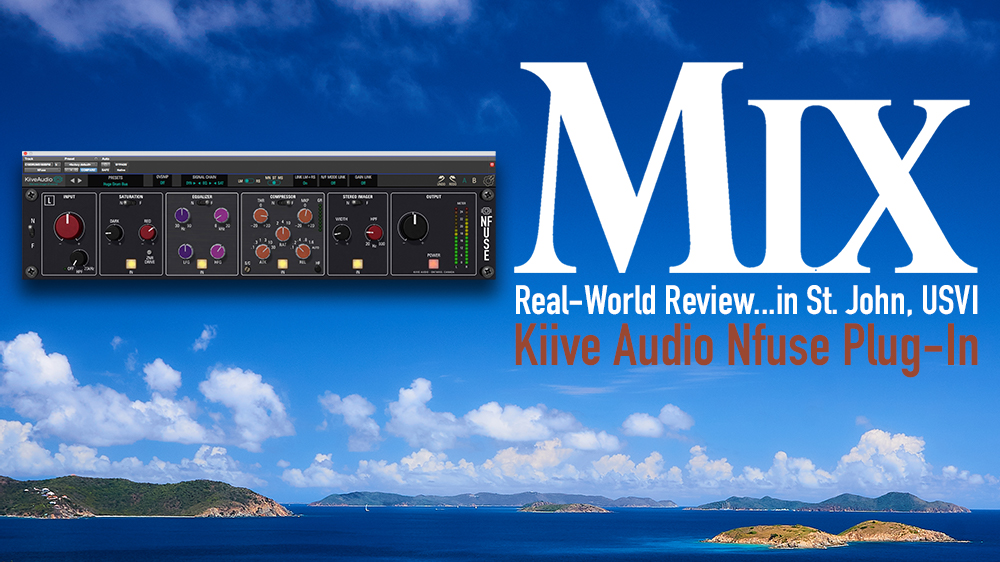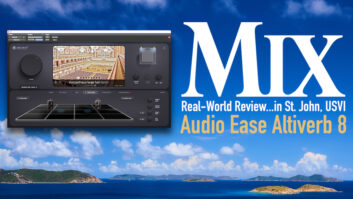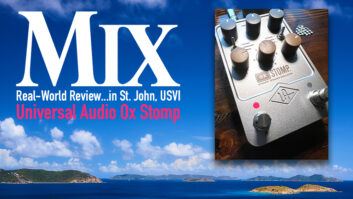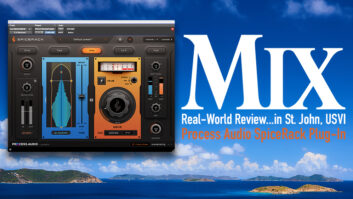
Every year, Mix contributors Rich Tozzoli, Mike Dwyer and Bruce MacPherson decamp to St. John, USVI, and temporarily turn a house into a studio where they record TV cues while also testing new equipment and software, resulting in a bevy of Mix Real-World Reviews written in a unique part of the real world.
USVI (May 9, 2024)—Inspired by the SSL Fusion and Rupert Neve MBT, the new NFuse plug-in from Kiive Audio gives you the sound of two of the most popular and sought-after analog mix bus processors on the market, with a ton of extra goodies not possible on the hardware units.

Start by choosing your base flavor—N for Rupert Neve or F for SSL Fusion—and you’ll be presented with a comprehensive channel strip consisting of saturation, EQ, compression and stereo imaging modules with the distinct sonic character of each unit. This alone would be enough to get most mix engineers excited, but Kiive takes it a step further by allowing you to swap out individual components by simply clicking the N/F switch above each section. Between this and the ability to re-order the modules using the “signal chain” section in the top menu bar, you’re able to create a wide array of custom channel strips to fit the needs of any track.
I first tried NFuse on my drum bus, where it quickly found a permanent home. I started with the N-style saturation, using the “Red” knob to bring out harmonics in the upper midrange and top end, adding both color and clarity. I followed this up with a little tone shaping on the F-style EQ and a healthy dose of compression using the F-style compressor, a re-creation of the famous SSL bus compressor, to add a ton of extra punch.
On guitars, I found the F-style saturation perfect for adding extra grit and weight—especially on clean guitars like we had on this project. (The Density knob allows you to blend between smoother even-order harmonics and more aggressive and inyour- face odd-order harmonics so you can find the right type of saturation to fit any situation.) I followed that up with the N-style opto-compressor for some gentle smoothing of the dynamics, and the N-style imager for a touch of extra width on the top end.
Between the flexibility and the amazing overall sound quality, NFuse has quickly become a staple in my mix sessions, finding its way onto most of my instrument buses as well as my mix bus, adding that extra bit of polish and refinement to every mix.







